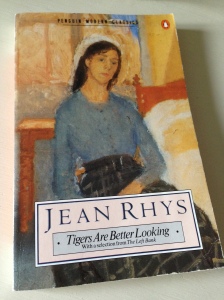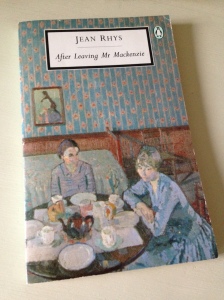A few weeks ago, I posted a list of some of my favourite novels set in hotels, featuring much-loved modern classics such as Vicki Baum’s Grand Hotel, Anita Brookner’s Hotel du Lac and Elizabeth Taylor’s Mrs Palfrey at the Claremont. The post proved quite a hit, with many of you adding your own recommendations in the comments. Many thanks for those suggestions – I now have several excellent possibilities to check out!
As promised in the ‘hotels’ post, here’s my follow-up piece on boarding-house novels, an interesting variant on the theme. While boarding houses have been around since the 19th century, they were particularly common in the first half of the 20th century, offering each ‘boarder’ the opportunity to rent a room cost-effectively, particularly in towns or cities.
Just like hotel guests, every boarder comes with their own backstory, habits and peculiarities, throwing up the potential for drama, romance or tension as different individuals interact, especially in the communal areas of the house. There’s also a seedy ‘feel’ to many boarding houses, a sleazy, down-at-heel atmosphere that adds to their appeal – certainly as settings for fiction if not places to live!
So, without further ado, here are a few of my favourite boarding house novels from the shelves.
Voyage in the Dark by Jean Rhys (1934)
Voyage is narrated by Anna Morgan, an eighteen-year-old girl brought to England from her former home in the West Indies by her stepmother, a selfish woman who all but abandons Anna after her father’s death. What follows is a gradual unravelling as Anna drifts around in a state of depression, moving from one down-at-heel room to another, slipping unconsciously into a state of dependency, turning to drink and sleeping with men in the hope of some much-needed comfort. This is a brilliant, devastating book, played out against a background of loneliness and despair – all the more powerful for its connection to Rhys’ own life.
The Slaves of Solitude by Patrick Hamilton (1947)
Perhaps the quintessential boarding house novel, this darkly comic tragicomedy revolves around Miss Roach, a spinster in her late thirties whose drab and dreary existence is mirrored by the suffocating atmosphere in her lodgings, The Rosamund Tea Rooms. Located in the fictional riverside town of Thames Lockdon, The Rosamond is home to a peculiar mix of misfits – lonely individuals on the fringes of life. Holding court over the residents is fellow boarder, the ghastly Mr Thwaites, a consummate bully who delights in passing judgements on others, much to Miss Roach’s discomfort. Hamilton excels at capturing the stifling atmosphere of the boarding house and the stealthy nature of war, stealing people’s pleasures and even their most basic necessities. A brilliant introduction to the boarding-house milieu.
Of Love and Hunger by Julian Maclaren-Ross (1947)
Set in the 1940s, this marvellous novel is narrated by Richard Fanshawe, a young man who finds himself in the unenviable position of trying to eke out a living by selling vacuum cleaners to sceptical housewives. The story is shot through with dark humour, much of which stems from Maclaren-Ross’ wonderfully sharp observations on Fanshawe’s experiences as a salesman and life at the boarding house where he rents a room. Constantly in arrears with the rent and heavily reliant on credit, Fanshawe never seems to have enough money in his pockets. He’s living from one day to the next, but there’s always the hope that wealthy Uncle George will come through with a cheque to tide him over for a while. Meanwhile, Fanshawe’s landlady is on the lookout for any signs of money…Running alongside this storyline is a touch of romance as Fanshawe falls for a colleague’s wife, Sukie, while her husband is away – a relationship played out against the backdrop of prying landladies, seaside cafes and picnics in the woods. This terrific novel is highly recommended, especially for Patrick Hamilton fans.
The Girls of Slender Means by Muriel Spark (1963)
The setting for this one is The May of Teck, a large boarding house/hostel ‘for Ladies of Slender Means below the age of Thirty’, situated in London’s Kensington. Despite the novel’s wartime setting, there’s a wonderful boarding-school-style atmosphere in The May of Teck, with a glamorous Schiaparelli gown passing from one girl to another for various important dates. Spark is particularly good on the social hierarchy that has developed within the hostel, with the youngest girls occupying dormitory-style rooms on the first floor, those with a little more money sharing smaller rooms on the second, while the most attractive, sophisticated girls occupy the top floor, a status that reflects their interesting jobs and active social lives. By turns sharp, witty, touching and poignant, this evocative novel touches on some dark and surprising themes with a dramatic conclusion to boot.
The Boarding-House by William Trevor (1965)
I loved this darkly comic novel set in a South London boarding house in the mid-1960s. At first, Mr Bird’s tenants appear to be a disparate bunch, each lodger possessing their own individual characteristics and personality traits. However, it soon becomes clear that they are all solitary figures, a little flawed or inadequate in some way, hovering on the fringes of mainstream society. Residents include Major Eele, an old-school eccentric with a penchant for strip clubs; Mr Scribbin, a railway enthusiast who spends his nights listening to gramophone records of steam trains; and Rose Cave, a gentle, middle-aged woman who remains haunted by the memory of her dead mother. All of these characters are drawn by Trevor with great precision and clarity in such a way that gently elicits the reader’s sympathy. Moreover, their existences are marked by a deep sadness or loneliness, an air of missed opportunities and unfulfilled potential as life has passed them by. In short, this is a brilliantly observed novel, a wickedly funny tragicomedy of the highest order.
The House of Dolls by Barbara Comyns (1989)
We’re back in Kensington for this one, set in a London boarding house in the midst of the swinging ‘60s. Amy Doll, a widow in her mid-thirties, has four female boarders – all middle-aged or elderly, all divorced or widowed and cast adrift from any immediate family. Low on funds and in need of support to pay the rent, the ladies have turned their hands to a little light prostitution, fashioning a sort of ‘lounge’ for elderly gentlemen in Amy’s drawing-room. Central to this operation are Berti and Evelyn – both stick-thin and well past their prime. With her dyed red hair and skin-tight clothes, Berti is the more formidable of the pair, a rather nosy, bawdy woman who proves difficult for Amy to control. Almost as troublesome is Evelyn – ‘a poor man’s version of Berti’ with her blue rinse and slightly tragic air. This is a charming, wickedly funny novel with some serious themes at its heart – how sometimes our hands are forced by unfortunate circumstances – loneliness, poverty, abandonment or adversity. A lesser-known Comyns, but well worth your time.
Also worthy of an honourable mention or two:
- R. C. Sherriff’s charming 1931 novel The Fortnight in September, in which the Stevens family take their annual holiday at Bognor’s Seaview boarding house, a traditional establishment that has seen better days;
- Olivia Manning’s excellent 1951 novel School for Love, a wonderfully compelling coming-of-age story set in Jerusalem towards the end of WW2. Notable for the monstrous Miss Bohun, who presides over the central setting – a boarding house of sorts;
- Patricia Highsmith’s The Sweet Sickness (1960) – an immersive story of obsession, desire and fantasy. David, the novel’s central protagonist, spends much of his time fending off unwanted attention from the other residents at Mrs McCartney’s boarding house, his shabby residence in New York;
- Beryl Bainbridge’s An Awfully Big Adventure (1989) – a most enjoyable novel set in the theatrical world of 1950s Liverpool, with a down-at-heel boarding house to boot;
Do let me know your thoughts if you’ve read any of these books. Or maybe you have some favourite boarding-house novels that you’d like to share with others – I’m sure there are many more I’ve yet to discover, so please feel free to mention them below.










